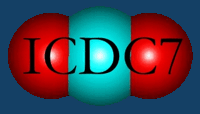 | Unraveling the Decline in High-latitude Surface Ocean Carbonate |
 By Jim Orr By Jim Orr
For perhaps 25 million years, surface waters throughout the ocean have
remained saturated with respect to calcium carbonate (CaCO3). Yet increasing atmospheric CO2
reduces ocean pH and carbonate ion concentration [CO32-] and thus the level of saturation. Despite this acidification, it has been
estimated that all surface waters will remain saturated for centuries. However,
marine calcifiers are still expected to suffer reductions in the rate at which
they form their exoskeletons out of CaCO3. Here we show with ocean
data and models that the anthropogenic acidification will actually cause some
surface waters to become undersaturated within decades, thus exacerbating the
problem for marine calcifiers [Orr et al.,
2005]. For instance, by 2050 when atmospheric CO2 reaches 550 ppmv
under the IS92a business-as-usual scenario, Southern Ocean surface waters begin
to become undersaturated with respect to aragonite, a metastable form of CaCO3.
By 2100 as atmospheric CO2 reaches 788 ppmv under the same scenario,
undersaturation extends throughout the entire Southern Ocean (all ocean south
of 60°S) and into the surbarctic Pacific.
Link to Abstract
Link to Slides
|
|
|
|
| |
| Login |  |
| Related Links |  |
| Options |  |
|













